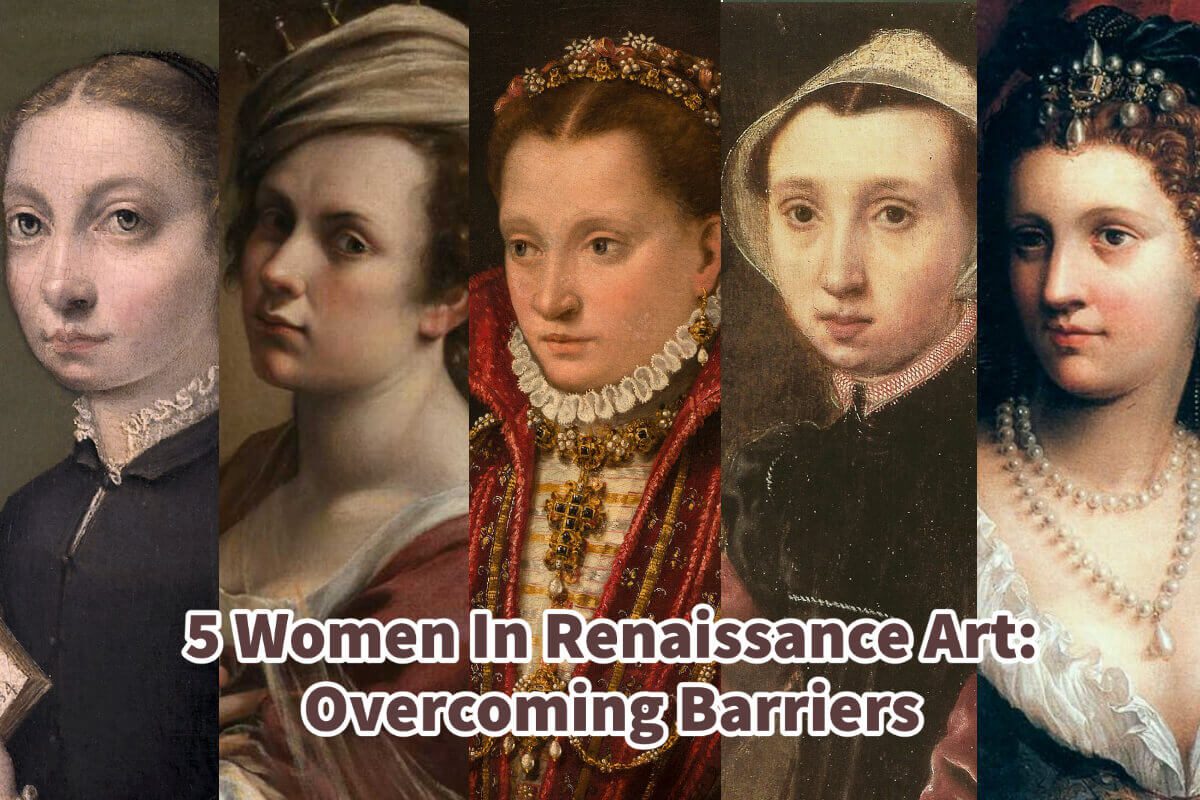The Renaissance is widely regarded as a glorious era of art, often attributed to male artists. However, it’s important to note that there were equally exceptional women artists during the Renaissance era.
The Renaissance period was a time of great artistic and cultural flourishing and strict gender roles and limitations for women. Despite these barriers, a few women still managed to break through and make a name for themselves in art. We will highlight five women artists from the Renaissance who overcame societal norms and gender biases to create some of the most iconic works for their time. Their stories inspire women in art and remind us that creativity knows no bounds, regardless of gender, society, culture, or class.
Table of Contents
- Overcoming Barriers: 5 Women Artists Of The Renaissance
- Frequently Asked Questions
- Related Questions
Overcoming Barriers: 5 Women Artists Of The Renaissance
During the Renaissance, women artists faced significant barriers to entry into the art world. However, a few women still managed to make a name for themselves in the male-dominated field of art.
Here are some of the most influential women artists from the Renaissance period:
Sofonisba Anguissola (c. 1532-1625)
Sofonisba Anguissola (c. 1532-1625) was an Italian Renaissance artist known for her exceptional portrait paintings. She was one of the first women to achieve international recognition as a painter when women faced significant barriers to entry into the art world.
Born into an aristocratic family in Cremona, Italy, Anguissola received an education in the arts, languages, and music from her father. It was her father who recognized her talent and supported her artistic ambitions.

Anguissola’s skillful technique in portraiture was highly praised by her contemporaries, including Michelangelo, who referred to her as a “truly rare thing in woman.” She also received several commissions from the Spanish royal court, where she served as a court painter to Queen Isabella of Valois and, later, to King Philip
Five Significant Paintings By Sofonisba Anguissola
Some of Sofonisba Anguissola’s most important works of art include:
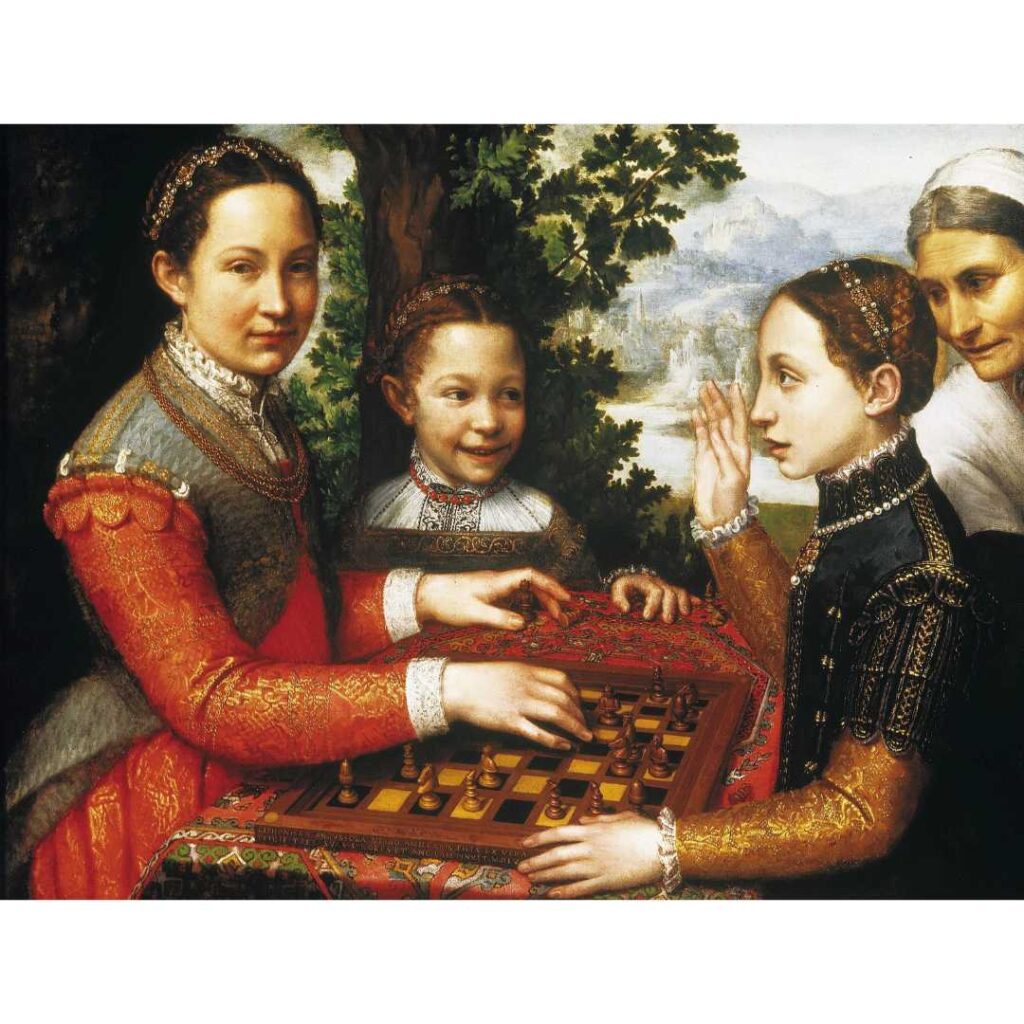
1. The Game of Chess – This painting depicts her sisters playing chess while their mother watches. It is considered one of her most famous works.
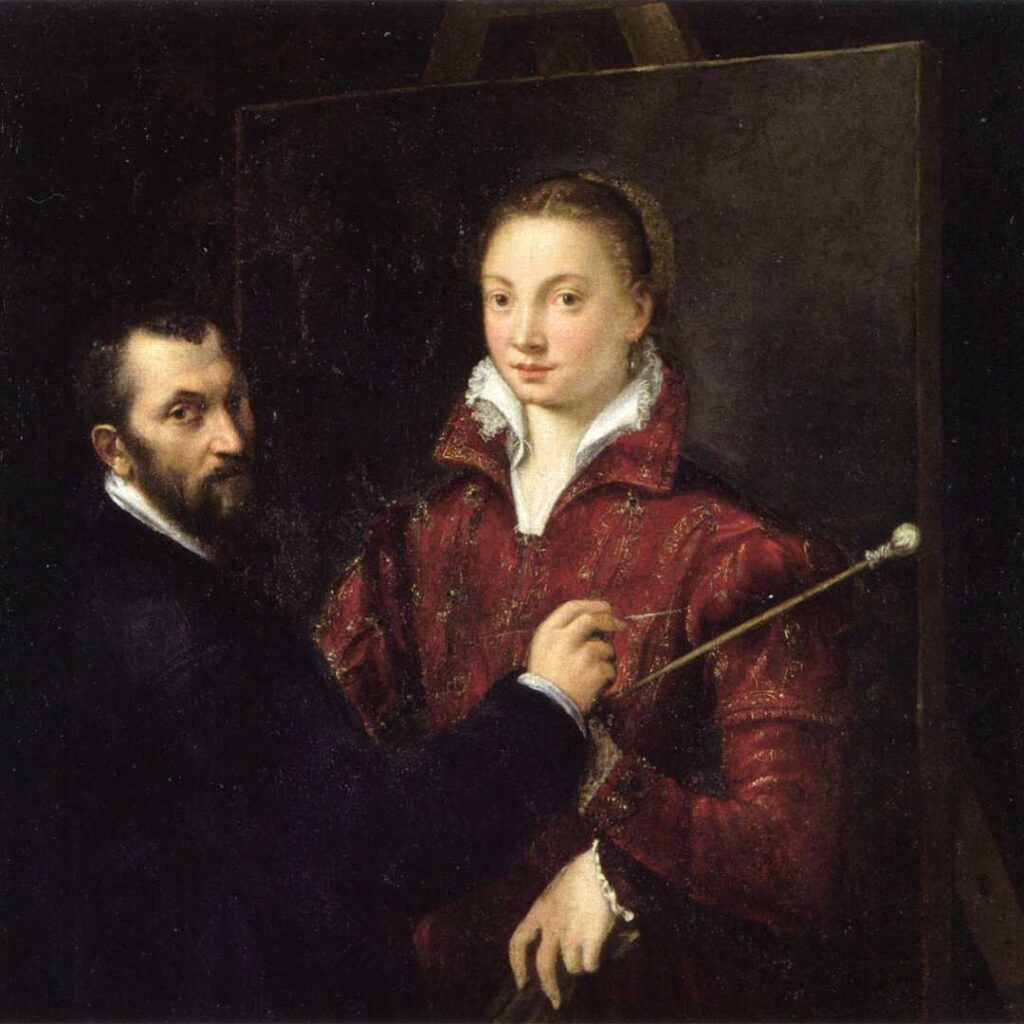
2. Self-Portrait with Bernardino Campi – In this painting, Anguissola portrays herself alongside a fellow painter, Bernardino Campi, to showcase her artistic abilities.
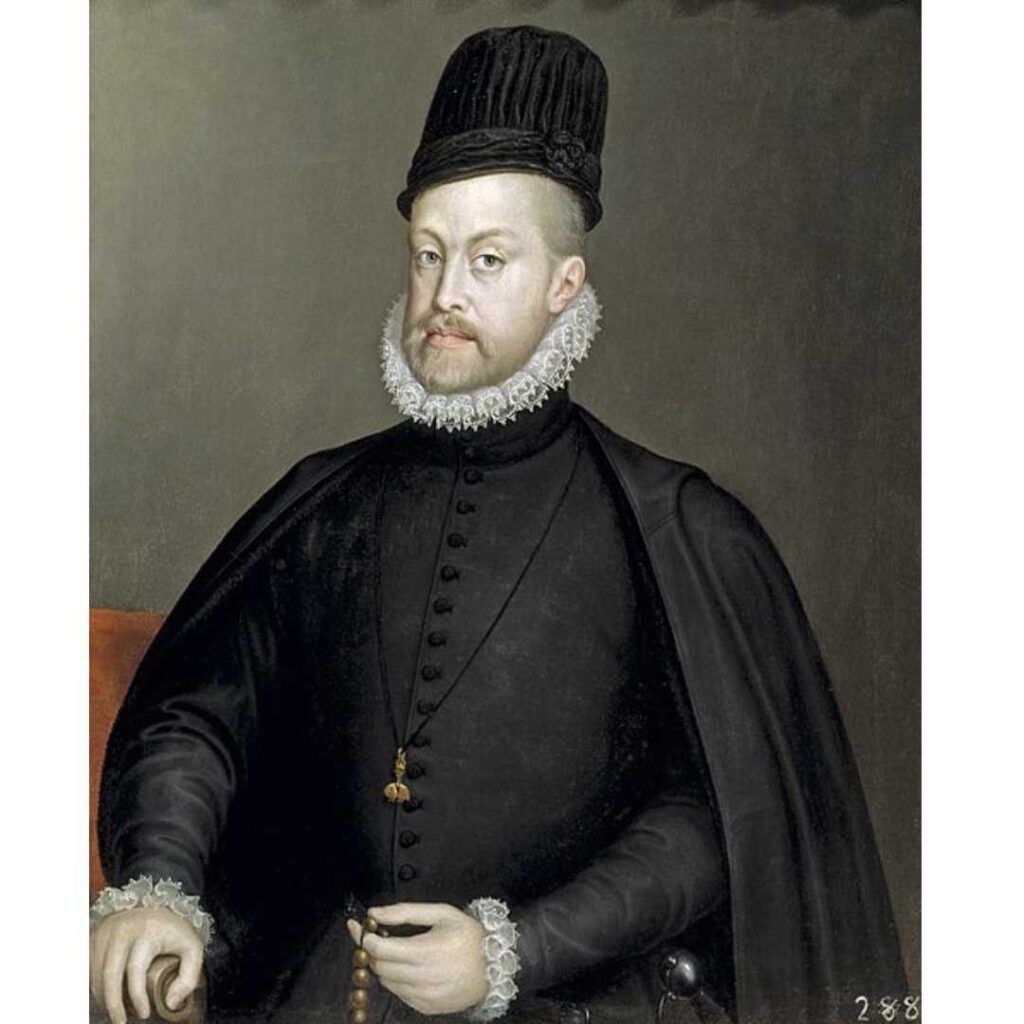
3. Portrait of King Philip II – This portrait was commissioned by King Philip II of Spain and is considered one of her most significant royal commissions.

4. Portrait of the Artist’s Sisters and Brother – This painting depicts Anguissola’s siblings, including her sister Lucia who is shown holding a cat. The painting is notable for its use of color and its portrayal of the siblings’ personalities.
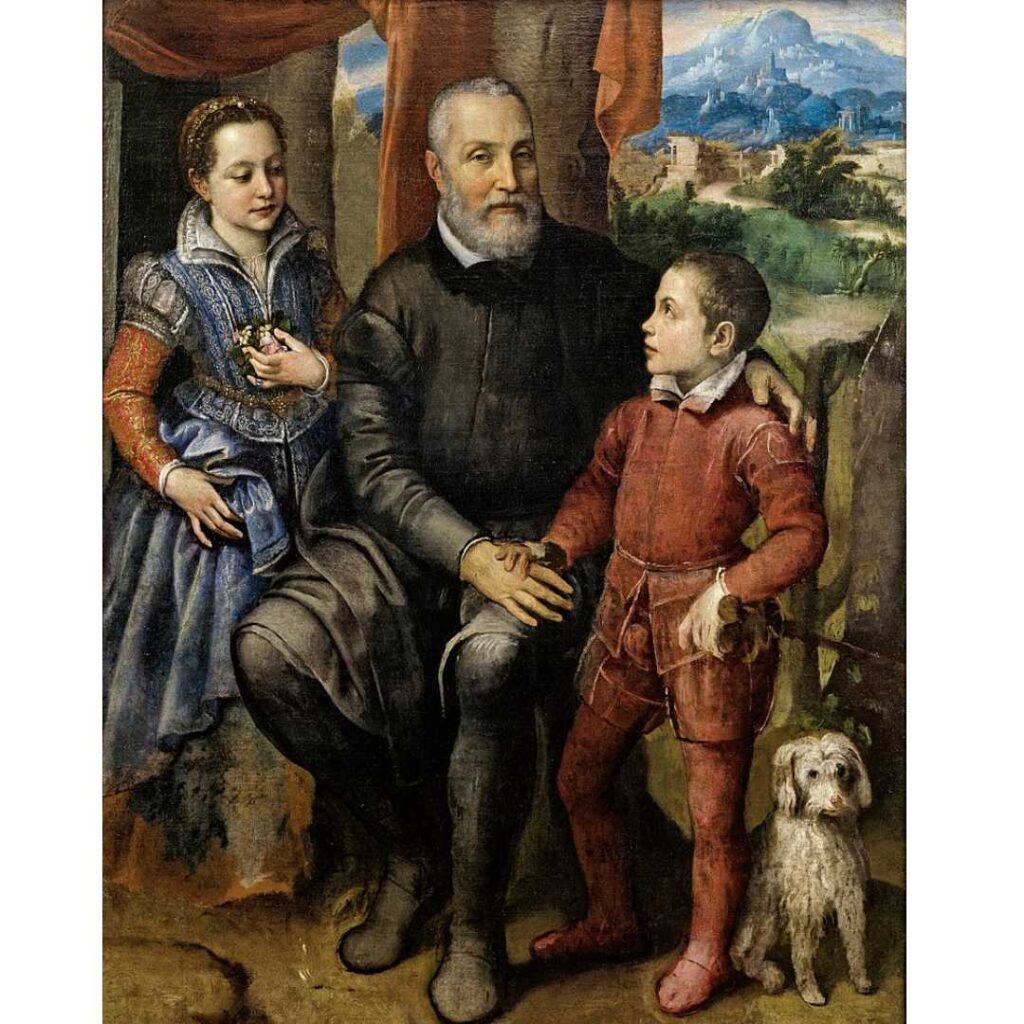
5. Portrait Group with the Artist’s Father, Brother, and Sister – This is a painting by Sofonisba Anguissola, an Italian Renaissance painter. It likely involved a combination of family sentiment, artistic skill, social status, and possibly a commission or patronage.
Sofonisba Anguissola’s contribution to the Renaissance art world was invaluable, paving the way for future women artists to break free from gender biases and limitations. Her legacy continues to inspire and influence many artists to this day.
Artemisia Gentileschi (1593-1652)
Artemisia Gentileschi (1593-1652) was a pioneering Italian Baroque painter known for her powerful and emotionally charged paintings. She was among the first women to enter the male-dominated art world and achieve international recognition for her exceptional talent.

Gentileschi’s paintings often depicted strong women from mythological and historical narratives, which was uncommon during the Renaissance period.
Her own life experiences heavily influenced Gentileschi’s art. She suffered a traumatic sexual assault at a young age, which she later channeled into her artwork, particularly in her depictions of strong and vengeful women. Her paintings often featured dramatic and intense scenes, with vivid use of color and shadow.
Five Significant Paintings By Artemisia Gentileschi
Some of Artemisia Gentileschi’s most important works of art include:
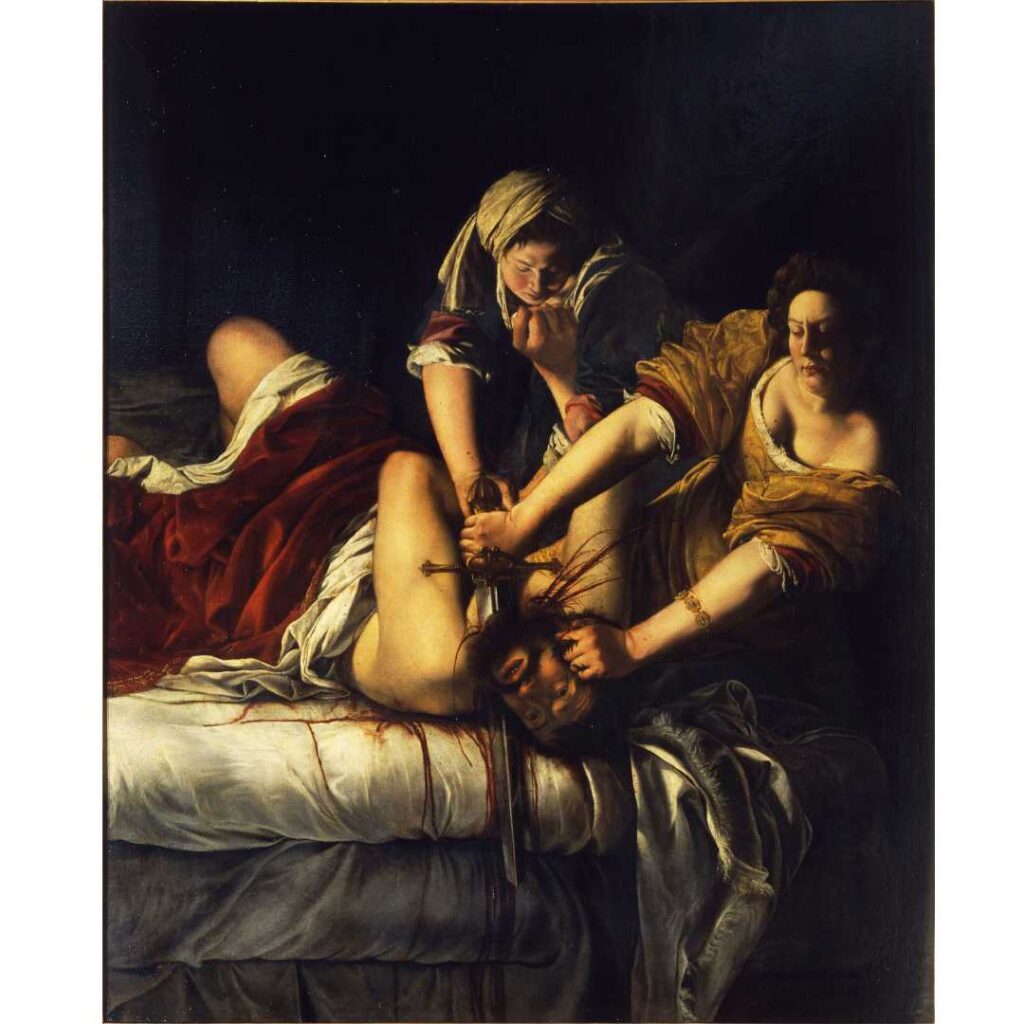
1. Judith Slaying Holofernes – This iconic painting depicts the biblical story of Judith beheading the Assyrian general Holofernes. The painting is known for its powerful depiction of the female heroine and its use of dramatic lighting.

2. Susanna and the Elders – This painting depicts the story of Susanna, who two elders in her garden spy on. The painting portrays Susanna as a victim of male power and highlights Gentileschi’s feminist views.
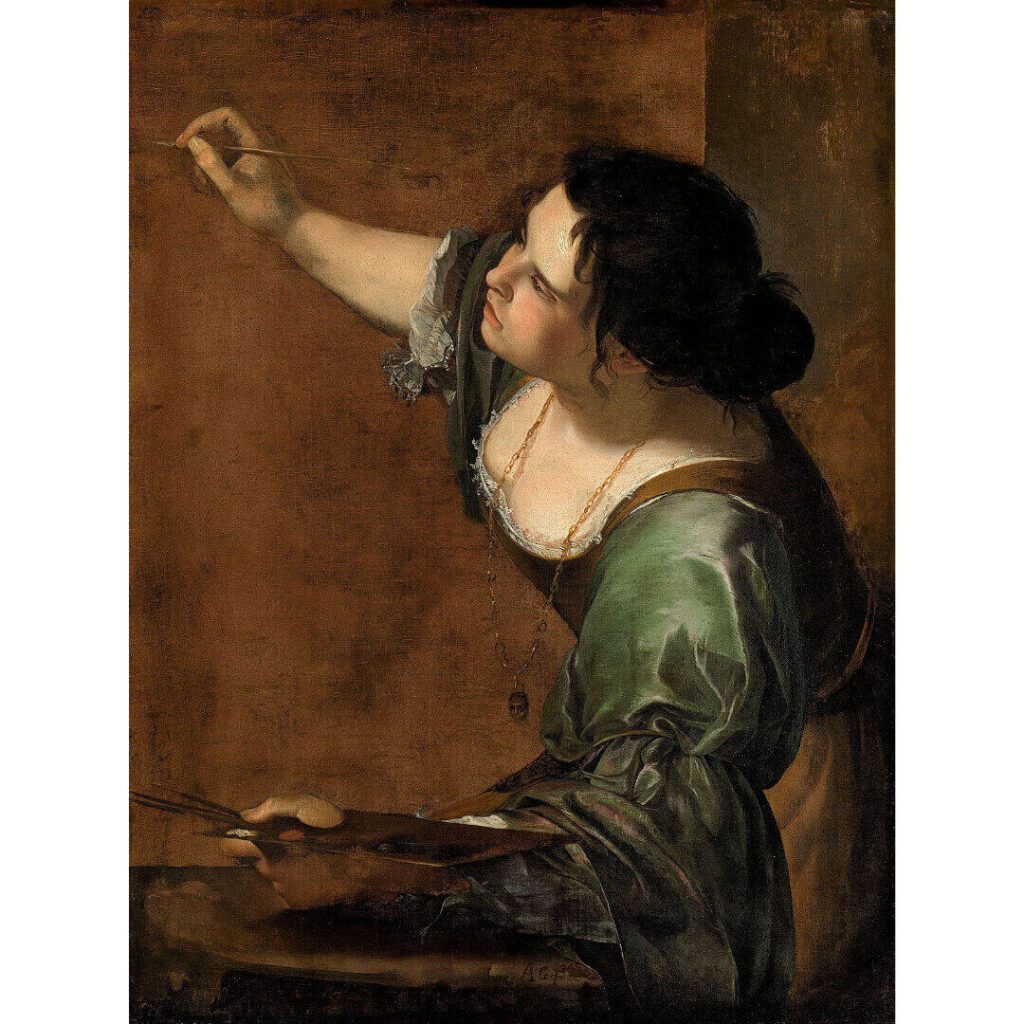
3. The Allegory of Painting – This self-portrait painting features Gentileschi as a female artist painting the symbolic figure of Painting. It showcases her technical skill in painting and highlights her position as a respected artist in the Renaissance period.
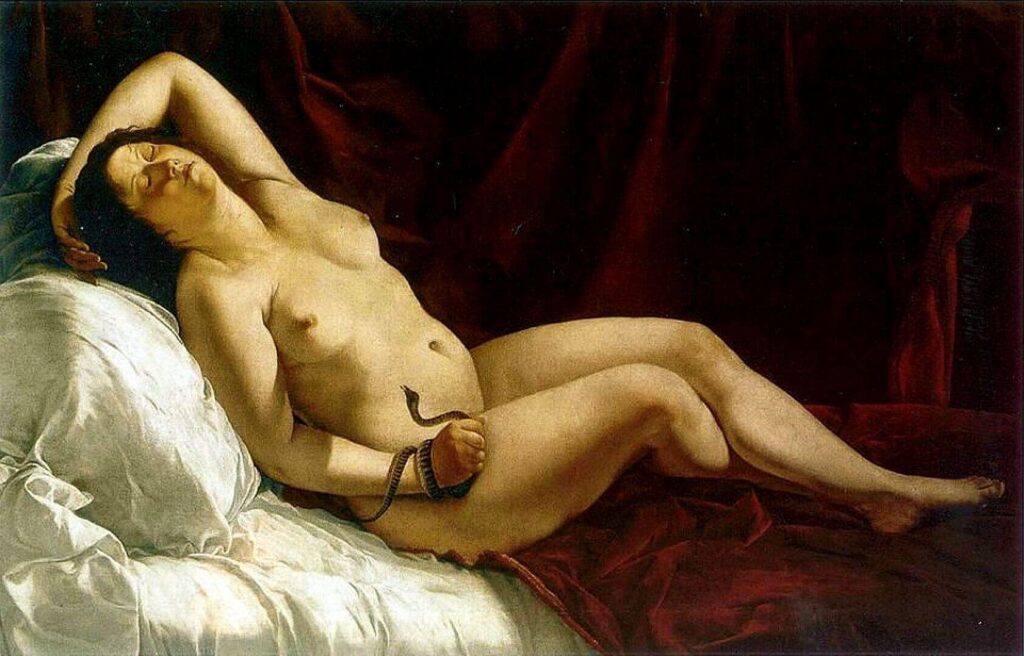
4. Cleopatra – This painting shows the Egyptian queen Cleopatra preparing to commit suicide by allowing a poisonous snake to bite her. Gentileschi’s depiction of Cleopatra is sensuous and melancholic, and her use of color and texture creates a vibrant composition.
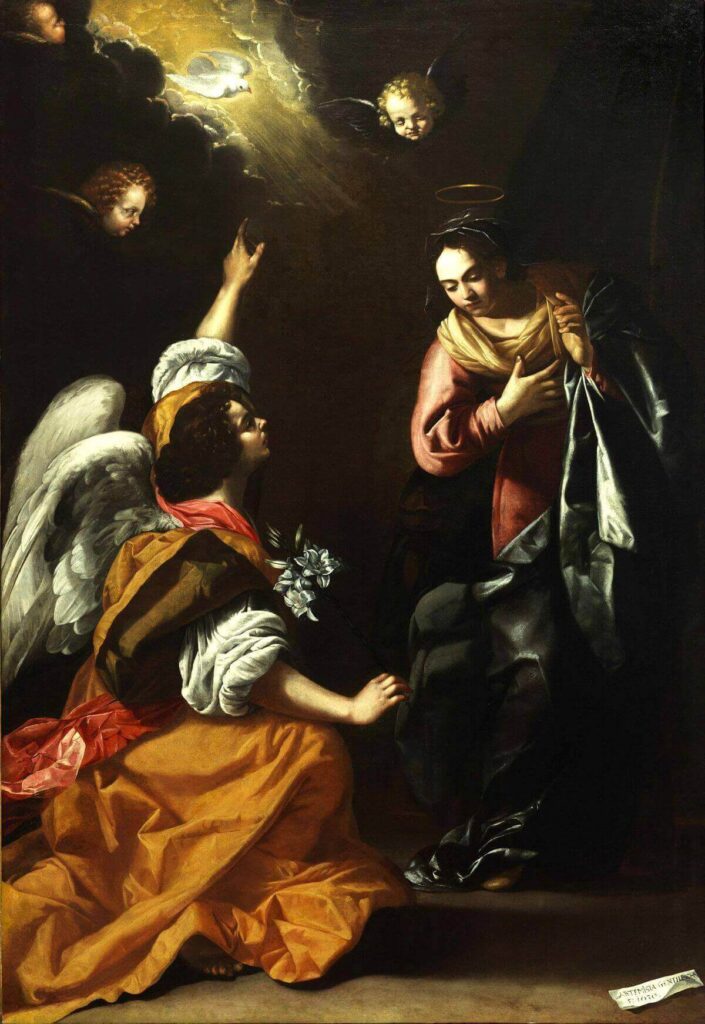
5. Lucretia – This painting shows the moment when the angel Gabriel appears to the Virgin Mary to announce that she will give birth to Jesus. Gentileschi’s rendition of the scene emphasizes the emotional intensity of the moment, with Mary depicted as a young and vulnerable woman overwhelmed by the angel’s message. The painting is notable for its use of color and composition, which create a sense of intimacy and grace.
Artemisia Gentileschi was a groundbreaking artist who overcame gender biases and personal hardships to become one of the most respected painters of her time. Her art challenged societal norms and paved the way for future women artists to make their mark in the art world.
You can learn more about Artemisia Gentileschi and her life by reading our blog, Artemisia Gentileschi’s Major Works Of Art, by clicking here.
Lavinia Fontana (1552-1614)
Lavinia Fontana (1552-1614) was an Italian Renaissance painter widely regarded as one of the most accomplished female artists of her time. She was born into a family of artists in Bologna, Italy, and received a rigorous education in art from her father, Prospero Fontana, a prominent painter. Fontana’s talent and skill in painting were evident from a young age, and she became one of the most sought-after portrait painters of her time.
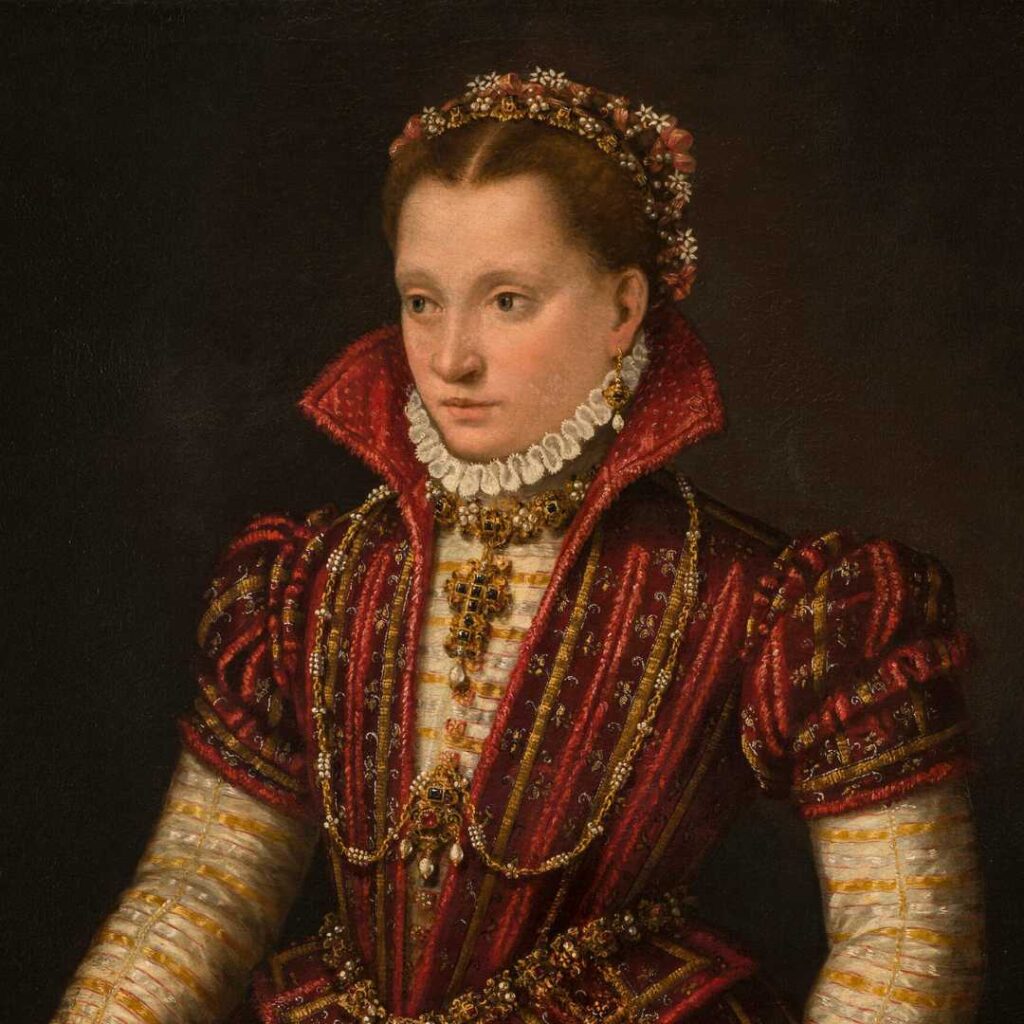
Fontana’s style was heavily influenced by the Mannerist style, characterized by its attention to detail and exaggerated proportions. She was exceptionally skilled at painting the intricate details of clothing and jewelry, and her portraits often featured her subjects in luxurious fabrics and elaborate hairstyles.
5 Significant Paintings By Lavinia Fontana
Some of Lavinia Fontana’s most important works of art include:

1. Portrait of Bianca Degli Utili Maselli and her children – The painting shows Bianca Degli Utili, the wife of Pierino Maselli, a nobleman, with six of her children. The children each hold different objects, such as a colorful bird, a plate of fruit, a pen and inkpot, and a medallion. Only one child, named Verginia, is specifically identified in the painting, as her name appears next to her and her mother. Verginia is shown holding her mother’s finger while the mother holds a dog, symbolizing loyalty as a wife.

2. Noli Me Tangere – This painting depicts the biblical scene of Mary Magdalene encountering the resurrected Christ. It is known for using light and shadow and intricate attention to detail.
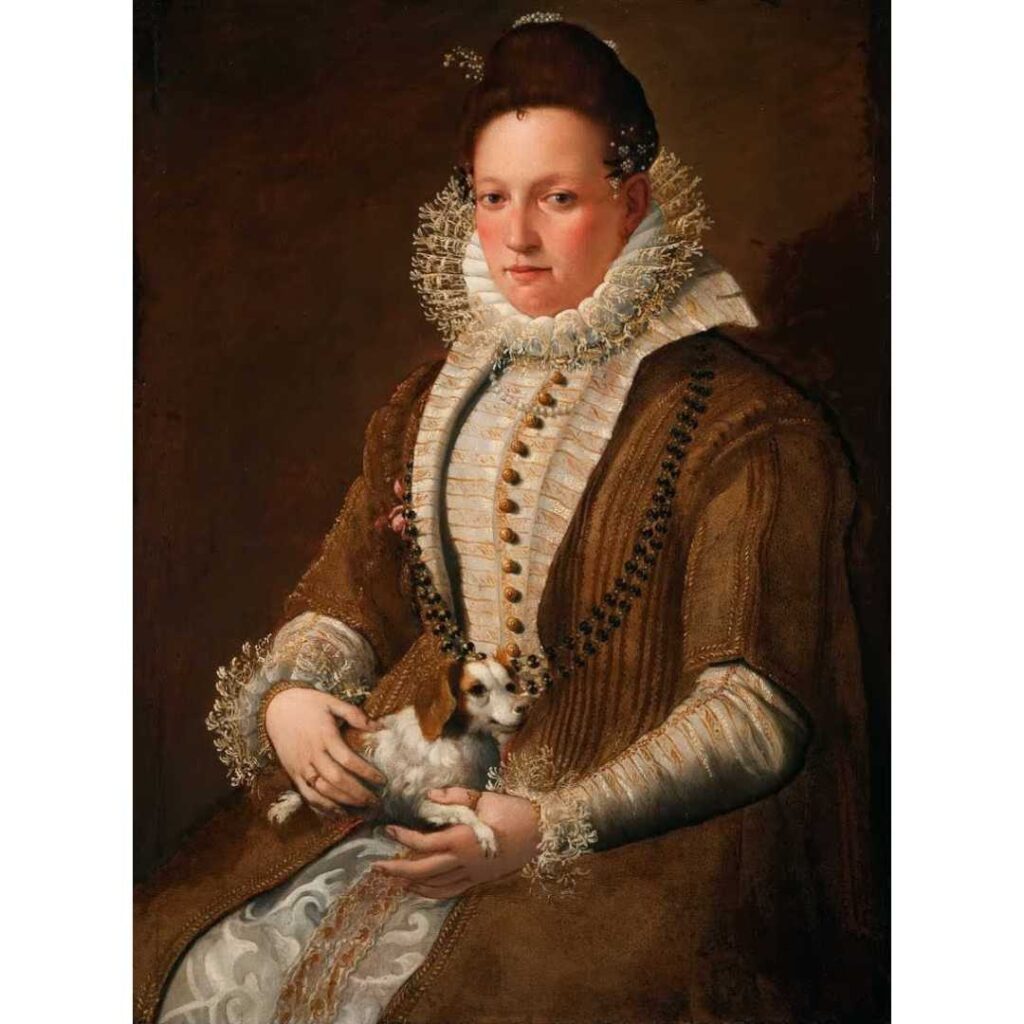
3. Portrait of a Lady with a Lap Dog – This painting features a noblewoman holding a lapdog, characterized by its vibrant colors and elaborate detailing.
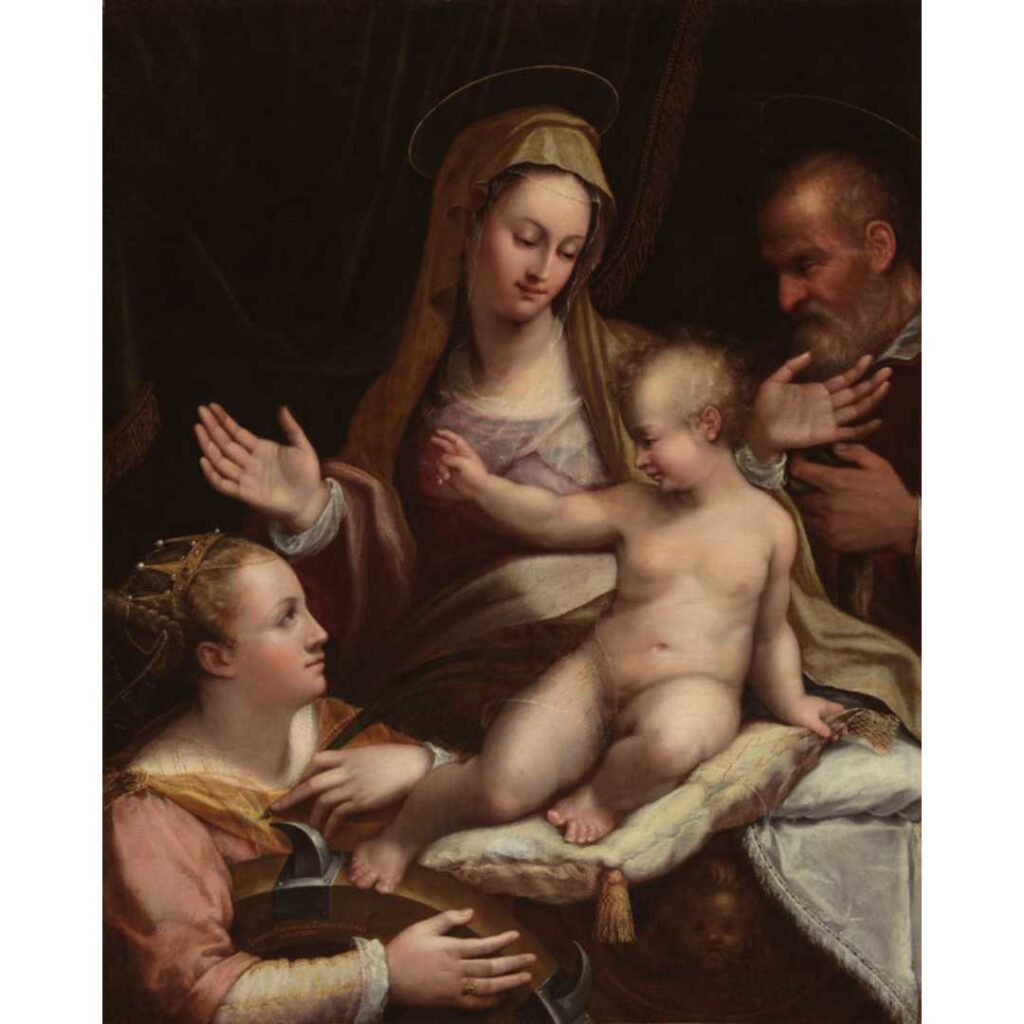
4. Holy Family with St. Catherine – This painting depicts the Holy Family with the addition of St. Catherine of Alexandria. It is known for its skillful use of light and shadow and attention to detail.

5. Self-Portrait at the Clavichord with a Servant – This painting features Fontana playing the clavichord, with a servant attending to her. It is considered one of her most famous self-portraits and highlights her skill as a painter of everyday life.
Lavinia Fontana’s contribution to the Renaissance art world was significant, particularly as a female painter in a male-dominated field. Her skillful technique and attention to detail in painting influenced many artists, and her legacy continues to inspire and influence contemporary artists.
Caterina van Hemessen (1528-1587)
Caterina van Hemessen (1528-1587) was a Flemish Renaissance painter and one of the earliest-known female artists to establish a reputation as a professional painter. She was born into a family of artists in Antwerp, Belgium, and received a thorough education in art from her father. Hemessen’s exceptional talent in painting was evident from a young age, and she became one of the most respected portrait painters of her time.
Hemessen’s style was characterized by her ability to capture the intricacies of her subjects’ features, including their clothing and accessories. Her portraits often featured her subjects in sumptuous fabrics and luxurious jewelry, showcasing her skill in painting intricate details.
5 Significant Paintings By Caterina van Hemessen
Some of Caterina van Hemessen’s most important works of art include:
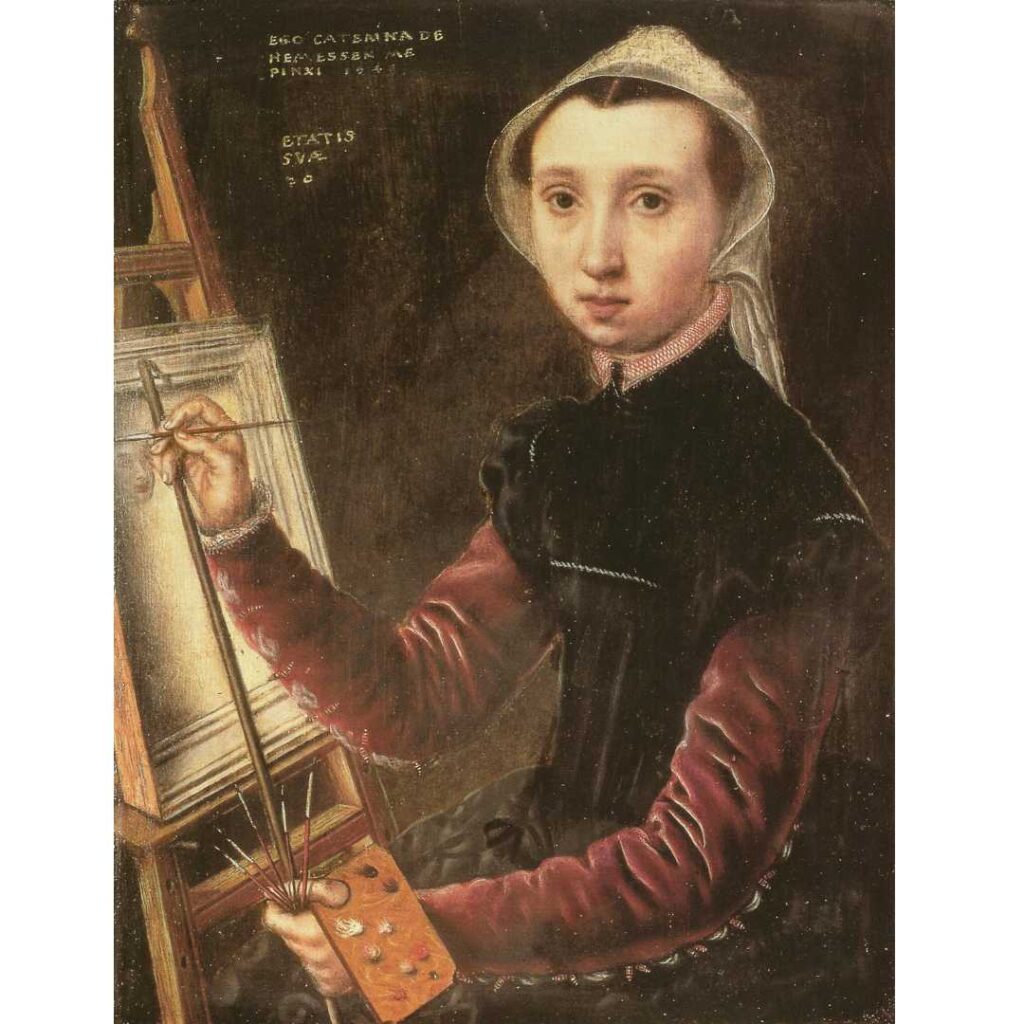
1. Self-Portrait – This painting is considered one of the earliest self-portraits by a female artist in Western art history. In the painting, Caterina depicts herself as a young woman dressed in fashionable clothing, holding a brush and a palette. The painting is notable for its detailed rendering of the textures and colors of the clothing and accessories.
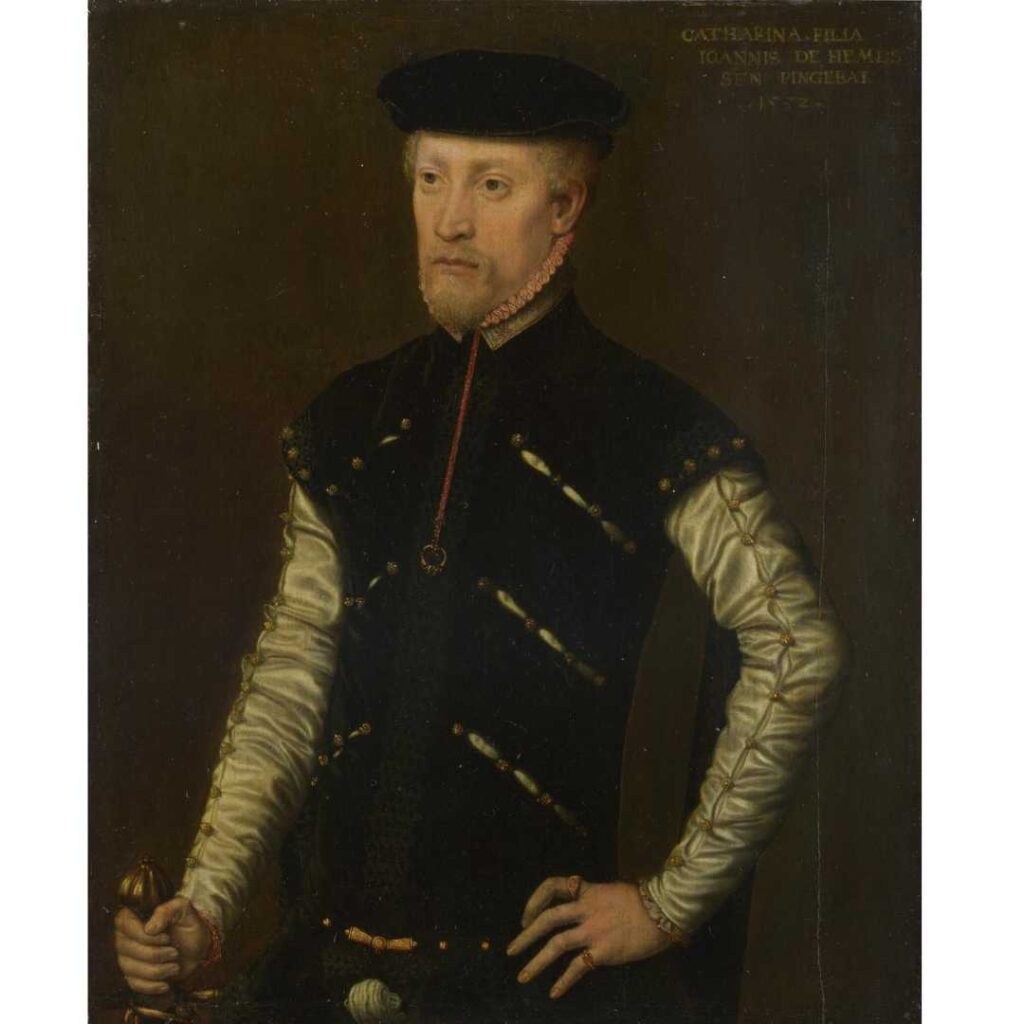
2. Portrait of a Man – This painting features a nobleman wearing a fur-lined coat and holding a sword. It is known for its skillful use of light and shadow and attention to detail.
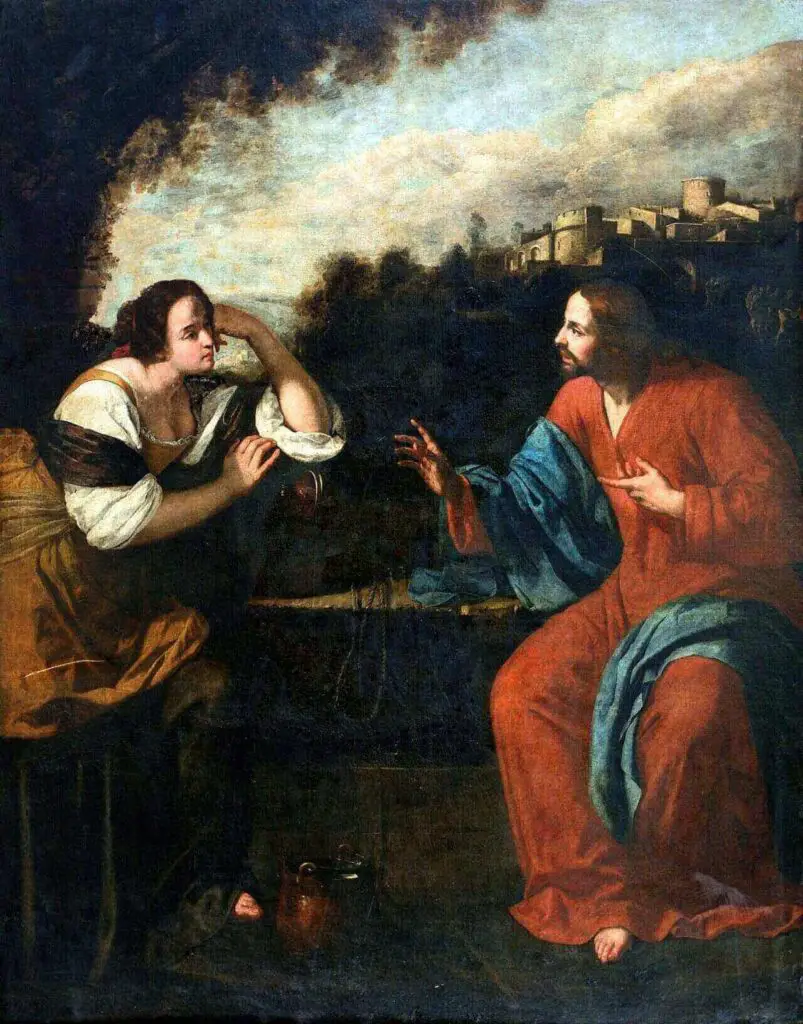
3. Christ and the Woman of Samaria – This painting depicts the biblical scene in which Jesus meets a woman of Samaria at a well and tells her about the living water he can offer her. Van Hemessen’s rendition of the scene emphasizes the woman’s curiosity and Jesus’ authority, and the use of light and shadow creates a sense of depth and drama.
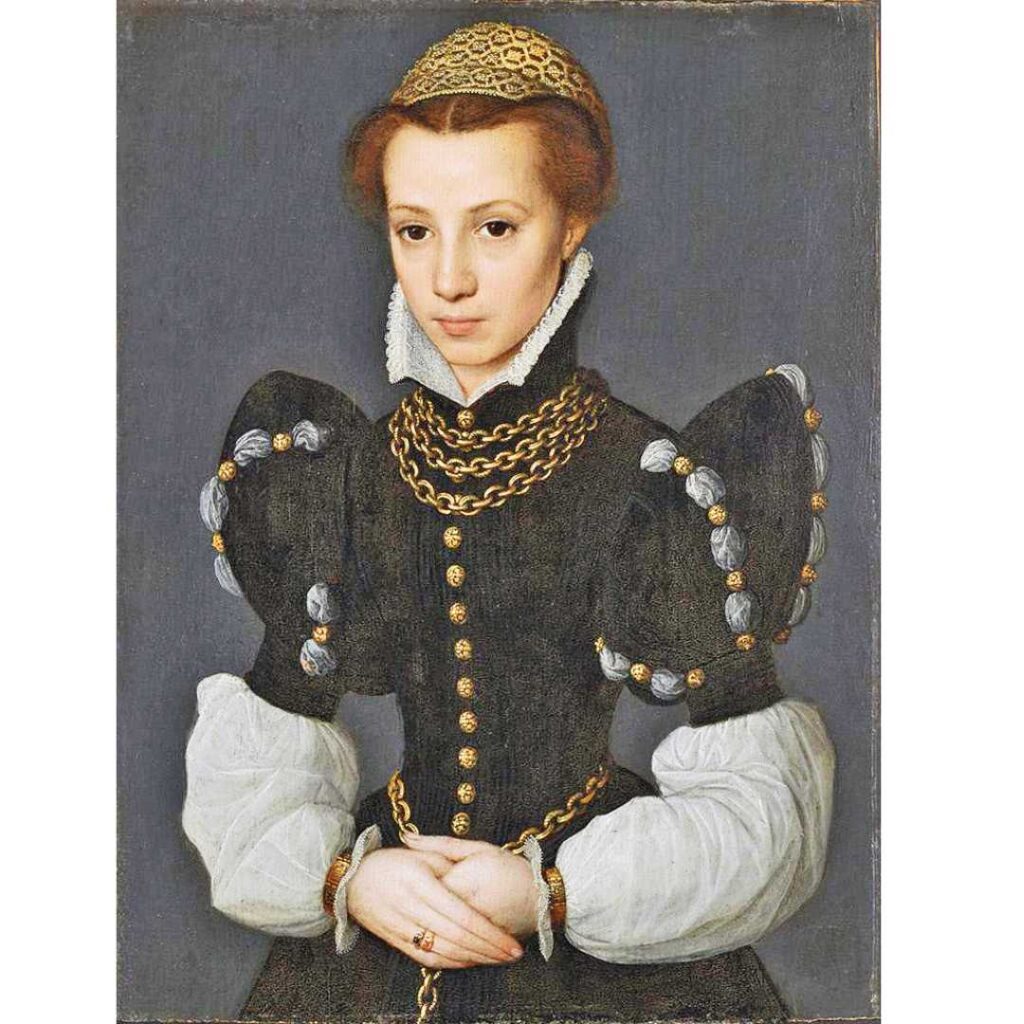
4. Portrait of a Lady – This painting is one of van Hemessen’s earliest works and depicts an unknown woman in a black dress and fur-trimmed coat. The woman is shown holding a prayer book, suggesting that she is a member of the nobility or religious order.

5. Christ Carrying the Cross – This painting is a religious scene showing Christ carrying the cross to his crucifixion. The painting is notable for its dramatic use of light and shadow, which creates a sense of movement and emotion in the figures.
Caterina van Hemessen’s contribution to the Renaissance art world was significant, particularly as a female artist in a male-dominated field. Her skillful technique and attention to detail in painting influenced many artists, and her legacy continues to inspire and influence contemporary artists.
Fede Galizia (1578-1630)
Fede Galizia (1578-1630) was an Italian Renaissance painter known for her exceptional skill in still-life paintings. She was one of the first women to achieve recognition as a professional painter when women were excluded from many artistic fields. Galizia’s still-life paintings were characterized by their intricate details and skillful use of color and light, showcasing her exceptional talent as a painter.

Galizia’s paintings often featured everyday objects, such as fruits, vegetables, and flowers, arranged to showcase their beauty and intricacy. Collectors and patrons highly valued her still-life paintings, and she was commissioned to paint for several noble families and religious institutions.
5 Significant Paintings By FedeGalizia
Some of Fede Galizia’s most significant paintings include:

1. Cherries in a Silver Compote – This oil-on-panel painting from the Italian Renaissance era was crafted in 1610. Currently, it resides in a private collection. The painting’s image is part of the public domain and has been categorized as a still-life piece featuring fruit.
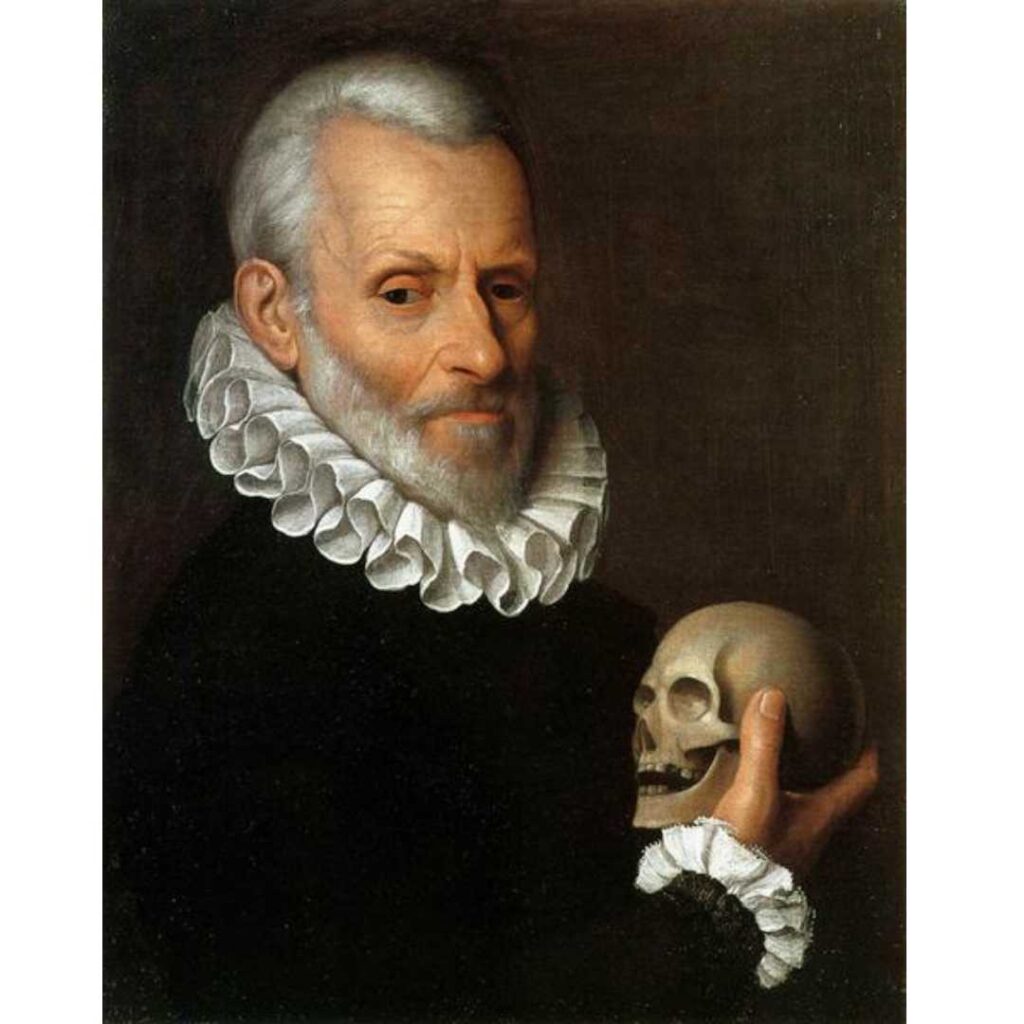
2. Portrait of a Physician – Although the identity of the person depicted in the painting is unknown, their profession can be unequivocally identified by the presence of a polished and shiny skull, likely handled by doctors. The painting follows the typical Milanese style during the era of Cardinal Federico Borromeo, with an elegant pose and subtle idealization that convey a sense of great dignity and nobility. This sets the painting apart from Galizia’s earlier portraits, characterized by a greater emphasis on descriptive naturalism.
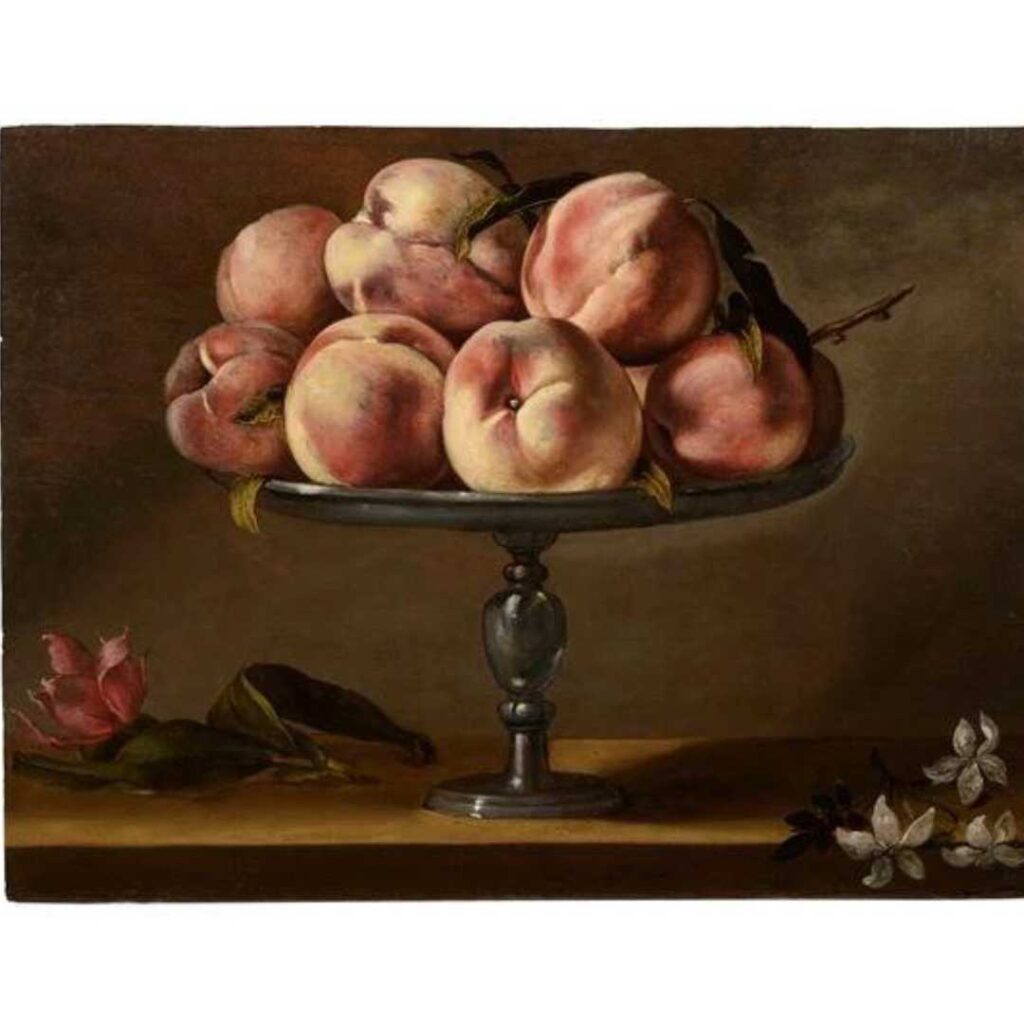
3. Still Life with Peaches – This painting depicts a bowl of cherries and peaches arranged on a table. Its vibrant colors and skillful use of light and shadow characterize it.
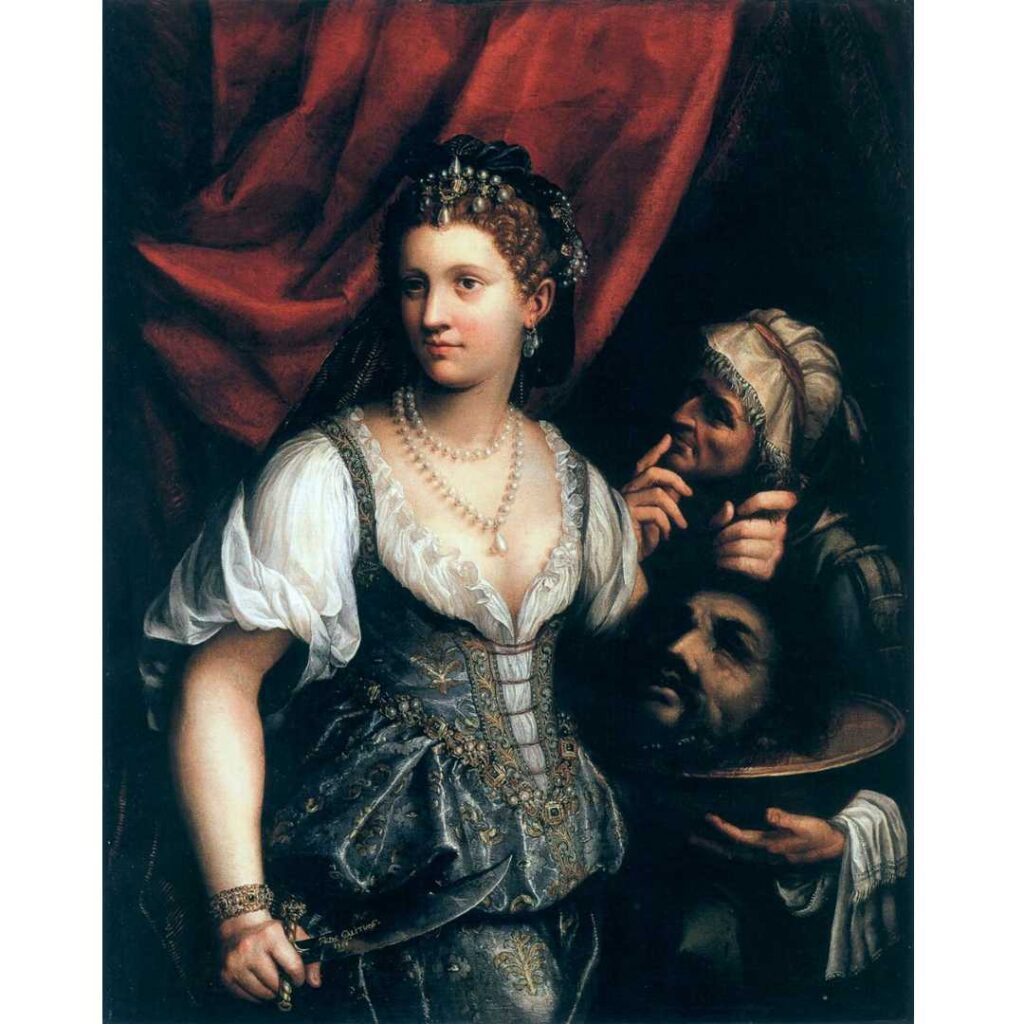
4. Judith with the Head of Holofernes – Is thought to feature a self-portrait of the artist in the figure of Judith.
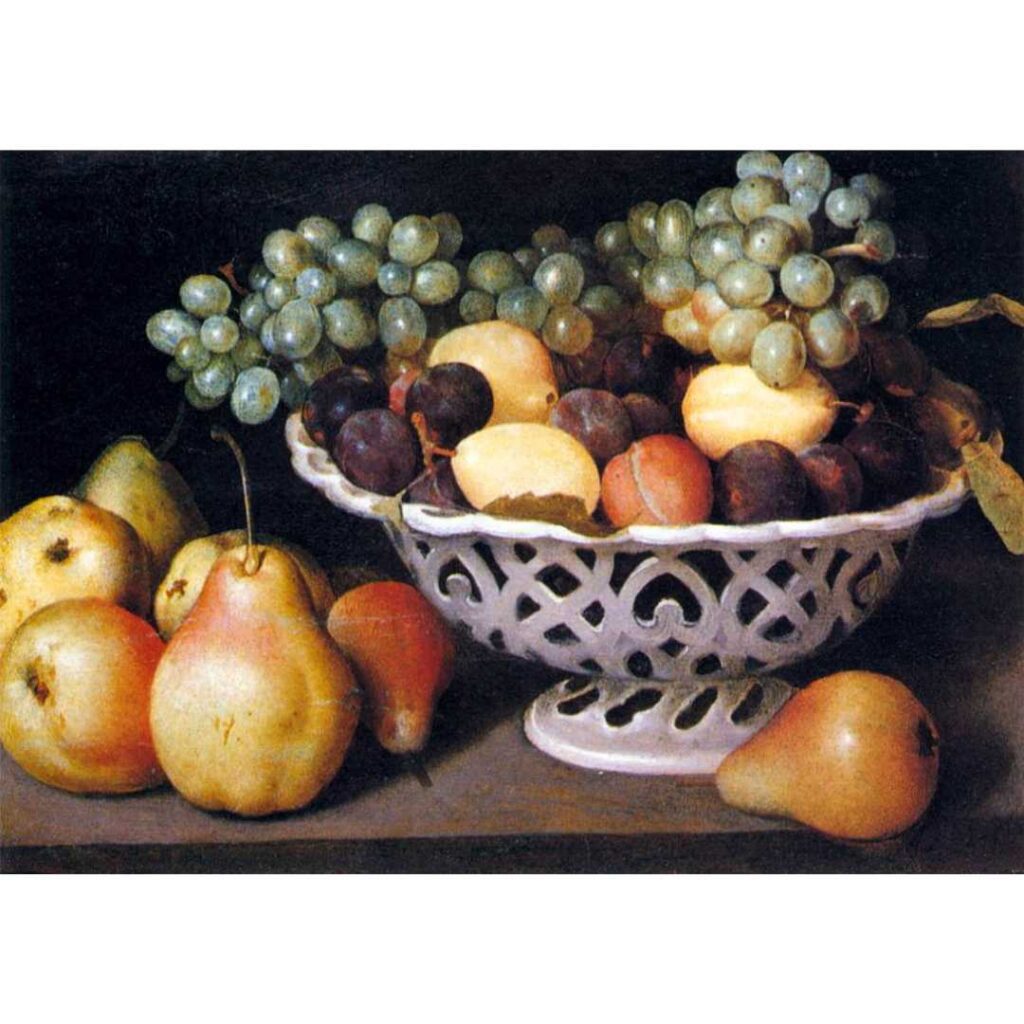
5. Maiolica Basket of Fruit – This painting features a basket of fruit, including pears, grapes, and cherries, to showcase their beauty and delicacy.
Fede Galizia’s contribution to the Renaissance art world was significant, particularly as a female painter in a male-dominated field. Her skillful technique and attention to detail in still-life painting influenced many artists, and her legacy continues to inspire and influence contemporary artists.
These women artists broke through barriers and challenged the gender norms of their time to become pioneers of the Renaissance period. They were pioneers of the Renaissance who overcame significant barriers to make a name for themselves in the male-dominated art world.
Despite societal norms and gender biases, these women artists forged their path and impacted the art world. Their exceptional talent and skillful technique in painting paved the way for future generations of women artists to break free from gender limitations and establish themselves as respected artists.
From Sofonisba Anguissola’s portraits to Artemisia Gentileschi’s powerful depictions of strong women, Lavinia Fontana’s attention to detail in portraiture, Caterina van Hemessen’s skillful technique, and Fede Galizia’s intricate still-life paintings, these women artists were trailblazers who broke through barriers and challenged the gender norms of their time.
Their legacy inspires and influences many artists today, reminding us that creativity knows no bounds, regardless of gender. We must continue to celebrate and elevate the work of these incredible women artists and give them the recognition they deserve.
Anita Louise Art is dedicated to art education, great artists, and inspiring others to find and create their art. We love art that uplifts and inspires.
#ArtToMakeYouSmile! #ArtToMakeYouHappy!
If you want to see any of my art, you can find out more by clicking here. If you are interested in what inspires me and my paintings, you can discover more by clicking here.
We have a free newsletter and would love you to be part of our community; you can subscribe to the newsletter by clicking here. If you have any questions, I would be happy to talk to you anytime. You can reach me, Anita, by clicking here.
Subscribe to our Anita Louise Art YouTube Channel filled with great videos and information by clicking here.
Join us for our podcast “5 Minutes With Art.” Spend just 5 minutes a week with us to discover and learn about great art and artists. You can find out more about our podcast by clicking here.
Frequently Asked Questions
Who were some notable women artists during the Renaissance period?
During the Renaissance, notable women artists emerged, challenging societal norms. Some prominent figures include Sofonisba Anguissola, Lavinia Fontana, Artemisia Gentileschi, Properzia de’ Rossi, and Caterina van Hemessen.
What were the societal barriers that women artists faced during the Renaissance?
Women faced numerous barriers, including limited access to art education, exclusion from art guilds, and societal expectations that deemed artistry as an inappropriate pursuit for women. These barriers made it challenging for women to establish themselves as professional artists.
How did Sofonisba Anguissola navigate societal expectations to become a successful artist?
Sofonisba Anguissola, an Italian artist, managed to receive art education despite societal restrictions. She became a court painter, gaining recognition for her portraits. Her talent and determination challenged the notion that women couldn’t excel in the arts.
How did Lavinia Fontana break gender barriers in Renaissance art?
Lavinia Fontana, an Italian painter, overcame societal expectations by gaining acceptance into the prestigious Roman Academy. She became the first female artist to be admitted, breaking new ground for women in the male-dominated art world.
What challenges did Artemisia Gentileschi face, and how did she overcome them?
Artemisia Gentileschi faced not only gender biases but also personal challenges, including a highly publicized rape trial. Despite these adversities, she became a celebrated artist, known for her powerful depictions of biblical and mythological scenes, showcasing resilience in the face of adversity.
Who was Properzia de’ Rossi, and how did she contribute to Renaissance art?
Properzia de’ Rossi was an Italian sculptor who created intricate and detailed works despite the limitations imposed on women in the arts. Her sculptures, often executed in minute detail, challenged the perception of what women could achieve in the realm of sculpture during the Renaissance.
How did Caterina van Hemessen defy gender norms in Renaissance art?
Caterina van Hemessen, a Flemish painter, defied gender norms by establishing herself as a successful portrait artist. She gained recognition for her skillful use of color and texture, proving that women could excel in traditionally male-dominated genres.
Were these women widely recognized during their lifetimes, or did they achieve posthumous recognition?
While some, like Sofonisba Anguissola, received recognition during their lifetimes, many faced challenges in gaining widespread acclaim due to gender biases. However, their contributions have been increasingly acknowledged in the centuries that followed.
How did the Renaissance women artists influence the perception of women in art for future generations?
The accomplishments of these women artists challenged and reshaped perceptions of women in the arts. They paved the way for future generations of female artists, inspiring them to pursue artistic careers and proving that talent knows no gender.
What is the legacy of these Renaissance women artists, and how are they remembered today?
The legacy of these women artists endures through their remarkable works and the barriers they shattered. Today, they are celebrated as pioneers who defied societal norms, contributing to the broader narrative of art history and inspiring contemporary female artists to pursue their creative passions.
Related Questions
Artemisia Gentileschi’s Major Works Of Art
Artemisia Gentileschi painted many significant works of art as a full-time artist during her lifetime. She was an extremely gifted artist who gave a unique perspective on her painting subject. Many of her works of art have hidden messages about the repression of women by men.
By clicking here, you can learn more by reading Artemisia Gentileschi’s Major Works Of Art.
Is Art An Natural Gift, Or Can Anyone Be Good At Art If They Practice?
Most artists have some natural gift or desire to be an artist. But their education, hard work, practice, and association with other artists make all the difference. Having a natural gift is the start of becoming an artist, but just having a natural gift will not make you a good artist. Becoming a great artist requires practice, education, and much hard work.
By clicking here, you can learn more by reading Is Art An Natural Gift, Or Can Anyone Be Good At Art If They Practice?.
Artemisia Gentileschi And Breaking Gender Barriers In Art
In the 17th Century in Italy, women had two career choices: joining a convent and becoming a nun or wife and mother. The laws also dictated that the man in the women’s lives, such as their fathers, husbands, and even sons, would make all the decisions for their lives. Women during this time had very few rights.
By clicking here, you can learn more by reading Artemisia Gentileschi And Breaking Gender Barriers In Art.

